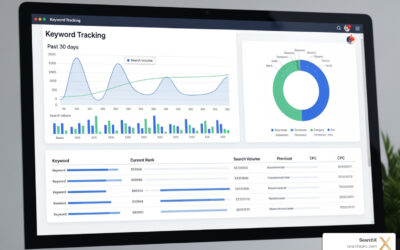Want to succeed on Amazon in 2025? Start with your product images. Amazon requires high-quality, correctly formatted images to boost sales and stay compliant. Here’s what you need to know:
- Main Image Rules:
- Use a 1:1 square aspect ratio.
- Minimum size: 1,000 x 1,000 px; Recommended: 1,600 x 1,600 px.
- Background must be pure white.
- Product should cover 85% of the frame.
- Additional Tips:
- Include at least 6 images + 1 video per listing.
- Use lifestyle shots, close-ups, and size comparisons.
- Avoid text, logos, watermarks, or blurry images.
- Why It Matters:
- 75% of shoppers rely on product photos to decide.
- Listings with optimized images can see a 30% boost in conversions.
Follow these guidelines to create standout listings and increase your sales.
Required Image Ratios for 2025
Main Product Image Ratios
As we move into 2025, maintaining high-quality images that display well across devices is a must. For features like image zoom, Amazon recommends using 1,600 x 1,600 px images. Here’s a quick breakdown of the technical specs:
| Image Type | Recommended Dimensions | Minimum Size | Maximum Size |
|---|---|---|---|
| Main Product Image | 1,600 x 1,600 px | 1,000 x 1,000 px | 10,000 x 10,000 px |
| Secondary Images | 1,600 x 1,600 px | 500 x 500 px | 10,000 x 10,000 px |
Amazon uses AI to monitor image compliance, offering real-time feedback if there are any violations. To ensure a consistent and professional look across all Amazon platforms, stick to a 1:1 square aspect ratio for your main product images. Following these guidelines minimizes formatting problems and keeps your listings compliant.
Rejected Image Formats
Amazon has strict rules about the types of images it accepts. Here are some key formats that will get rejected:
- Images with dimensions smaller than 500 pixels on the longest side
- Main product images that don’t have a white background
- Photos where the product occupies less than 85% of the frame
- Animated images, such as GIFs
- Main photos with added text or graphics
- Blurry or pixelated images
Violating these standards can result in your images being removed or your listings being suppressed until the issues are fixed.
Special Rules by Product Type
Certain product categories require extra attention to detail when it comes to images. Here’s what you need to know:
- Clothing and Accessories
- Include a front view of the item, ideally on a model or mannequin.
- Provide a back view to show fit and style.
- Add close-ups to highlight textures or patterns.
- If relevant, include a size chart as a secondary image.
- Electronics and Gadgets
- Show the entire device in the main image.
- Include shots that demonstrate screens or interfaces.
- Highlight ports and connection points with detailed images.
- Add images that provide a sense of the product’s scale.
- Home and Kitchen Products
- Use contextual images to show the product in use.
- Provide visuals that clearly indicate scale and dimensions.
- Add close-ups of key features.
- If assembly is required, include images that guide the process.
Amazon’s AI system is designed to flag category-specific issues quickly, offering detailed notifications to help sellers resolve problems efficiently.
Image Setup for Amazon Listings
Image Cropping Methods
Start with a high-resolution image that’s 1,600 pixels tall. This gives you the flexibility to crop while ensuring the product takes up at least 85% of the frame. Using a 1,600 × 1,600 px template can help you hit that 85% product coverage mark on a clean, white background.
Once you’ve nailed the cropping, you can focus on showcasing the product from multiple angles and perspectives to create a more engaging listing.
Multiple Image Management
After cropping, it’s time to make the most of Amazon’s image slots. You can upload up to 9 images per listing, though only the first 7 will appear on the live listing unless you’re including video content. Here’s what to include:
- Main product image: A clear shot on a pure white background.
- Alternative angles: Show the product from different perspectives.
- Lifestyle images: Highlight the product in real-life scenarios.
- Close-ups: Focus on features or details worth showcasing.
- Size comparisons: Help customers visualize dimensions.
- Technical specs: Include diagrams or labeled images.
- Package contents: Show exactly what’s included.
Adding a 360° view can make a big difference – listings with this feature see a 30% boost in conversions.
Image Quality Standards
Amazon’s guidelines emphasize the importance of high-quality images that load quickly and consistently. This matters because 75% of online shoppers rely heavily on product photos to make their buying decisions.
To ensure your images meet these expectations, work with high-resolution originals and use professional tools like Adobe Photoshop or TinyPNG to reduce file size without sacrificing clarity. This approach ensures your photos look sharp across all devices, even after Amazon’s compression system processes them. A polished, professional appearance can go a long way in building trust with potential buyers.
Dimensions & Specs for Amazon listing images
Image Editing Tools
For Amazon sellers, professional image editing tools are a must to meet strict image guidelines while delivering top-notch visuals. Today’s software often blends traditional editing features with AI-driven capabilities, making the process faster and more efficient.
Professional Editing Software
When it comes to professional tools, Adobe leads the pack. Photoshop offers AI-powered Neural Filters and intelligent background removal, while Lightroom Classic simplifies bulk editing with its batch processing features. Other strong contenders include DxO PhotoLab, which excels in noise reduction and camera-specific corrections, and Capture One Pro, known for its sharpness and precise color handling in raw image processing. These tools ensure that your Amazon listings maintain a polished and consistent appearance.
"Crop.photo is an essential part of our ecommerce fashion marketplace workflow… By increasing our retouching team’s productivity by over 70%, Crop.photo has been a game changer for us. Bulk crop images used to take days can now be done in a matter of seconds!" – Director of Creative Operations, US Top Retailer
Bulk Image Processing Tools
For sellers managing large volumes of images, bulk processing tools are a lifesaver. They simplify tasks like resizing, cropping, and adjusting aspect ratios, saving both time and effort.
| Tool | Key Features | Pricing |
|---|---|---|
| Magic Studio | AI-powered batch processing | $49.99/month or $299.99/year |
| CLAID.AI | AI-generated backgrounds | Starting at $9/month |
| Pebblely | Unlimited image processing | $39/month (Pro plan) |
A great example of bulk processing in action comes from Workwear Group in Australia. By moving 70,000 images to a new e-commerce platform, they saved over 400 hours of work and significantly cut costs.
Free Image Editing Options
For sellers on a budget, free tools can still deliver solid results:
- GIMP: Offers professional-grade editing and supports a wide range of file formats.
- Photopea: A web-based editor with advanced features.
- Canva: User-friendly with templates and a free version available.
- Pixlr Express: Quick, AI-powered editing for basic needs.
Mobile users have options too. Snapseed provides professional-grade editing tools for free, while PhotoRoom offers basic background removal at no cost, with premium features starting at $12.99/month.
These tools, whether paid or free, help sellers create high-quality images that stand out on Amazon.
sbb-itb-880d5b6
Image Setup Problems to Avoid
Amazon product images require careful attention to detail. Building on earlier guidelines, let’s dive into common mistakes and how to sidestep them.
Main Image Rejection Causes
Amazon has strict rules for main product images, and failing to meet them can lead to rejection. Here’s a quick look at common issues and their solutions:
| Issue | Fix |
|---|---|
| Background Color | Edit to ensure a pure white background (RGB 255,255,255). |
| Image Resolution | Use images with at least 1,600px for effective zoom functionality. |
| Product Fill | Crop the image so the product fills 85% of the frame. |
| Prohibited Elements | Remove any text, logos, or watermarks from the image. |
"Your product images are critical for conversions, but if they don’t meet Amazon’s strict guidelines, they’ll get rejected or suppressed, impacting your sales."
- Amad Ali Murtaza, Co-Founder of The AMZ Squad
Preventing Image Distortion
Maintaining the correct proportions is crucial for professional-looking product images. Here’s how to avoid distortion:
- Lock the Aspect Ratio: Always lock the aspect ratio when resizing to prevent stretched or squished images.
- Smart Cropping: Crop strategically to highlight key features without losing important details.
- Add White Space: If needed, add white space to meet Amazon’s dimension requirements without distorting the image.
"If you try to resize a picture without locking in the original aspect ratio, you may get some pretty goofy looking results."
- Charles Haacker, Retired pro stills photographer
Once proportions are in check, shift focus to file size and quality.
Image File Size Management
Balancing file size and quality is essential for smooth uploads and a polished look.
Format Tips:
- Opt for JPEG files for the best balance between compression and image quality.
Quality Checks:
- Preview images at different zoom levels to ensure clarity.
- Apply minimal sharpening to enhance details without introducing noise.
- Double-check uploads for any compression artifacts that could degrade the image.
For managing multiple listings efficiently, take advantage of Amazon’s bulk upload feature. This ensures consistency and saves time.
Summary
Amazon’s 2025 Image Standards
Did you know that high-quality product photos can increase conversions by 30%? With 75% of online shoppers relying heavily on images to make buying decisions, getting your product images right is a must for success on Amazon.
Here are the key standards Amazon has laid out for listing images:
- Professional photos with a pure white background (RGB 255,255,255)
- Products should cover at least 85% of the image frame
- Images must be in JPEG format for faster loading
- Use the sRGB color profile for consistent visuals
- Stick to square (1:1) or portrait (5:6) aspect ratios
"Product photos can make or break a sale. High-quality photos can bring products to life and help customers evaluate and learn about your product." – Mickey Toogood, Sr. Content Marketing Manager at Amazon
By following these standards, you can create images that not only comply with Amazon’s guidelines but also drive more conversions.
Quick Image Setup Guide
Here’s a simple guide to help you meet Amazon’s 2025 requirements and boost your sales:
- Technical Setup
- Use professional photography with proper lighting for clear, sharp images.
- Stick to square (1:1) or portrait (5:6) aspect ratios.
- Ensure the longest side of the image is at least 1,000 pixels.
- Save and submit your images in JPEG format.
- Visual Optimization
- Include at least six high-quality images for each product.
- Highlight multiple angles and key features to give shoppers a complete view.
- Make sure your images look great on mobile devices.
- Test your main image using Seller Central experiments to see what works best.
For example, a home-goods brand saw a 30% boost in conversion rates after switching to professional images that clearly showcased product features. This shows how impactful good visuals can be.
FAQs
How can I make sure my Amazon product images meet the guidelines and don’t get rejected?
Tips for Compliant Amazon Product Images
To make sure your Amazon product images meet the platform’s requirements and avoid unnecessary rejections, here are some straightforward guidelines to follow:
- Image Quality: Use high-resolution images with at least 1,000 pixels on the longest side to enable Amazon’s zoom feature. For sharper and more detailed images, aim for dimensions of 1,600 x 1,600 pixels or larger.
- Aspect Ratio: Stick with a square aspect ratio (1:1), as it’s the format Amazon prefers for its listings.
- Background and Content: Your main image should feature the product clearly against a plain white background. Avoid including props, text, or logos that might distract or confuse potential buyers.
By following these tips, you’ll create polished, professional images that not only comply with Amazon’s standards but also make your product listings more appealing to shoppers.
What are the best practices for optimizing Amazon product images to increase sales?
To make your product images stand out on Amazon and boost sales, here are some essential tips:
- Stick to a clean, white background for your main image. This ensures your product is the focus, free from props or distractions, and complies with Amazon’s guidelines.
- Use high-resolution images with at least 1,600 pixels on the longest side. This activates the zoom feature, allowing customers to closely inspect product details.
- Add lifestyle images that show your product in action. These help buyers imagine how the item fits into their daily lives, creating a stronger emotional connection.
- Optimize file sizes to maintain fast loading speeds without sacrificing quality. Slow-loading images can frustrate customers and hurt their experience.
By applying these practices, you’ll create sharp, engaging visuals that grab attention, improve the shopping experience, and encourage more purchases.
What are Amazon’s image requirements for different product categories?
Amazon has clear image standards for its product categories to maintain quality and uniformity. Across all categories, the main image must feature a pure white background, and the product itself should occupy at least 85% of the frame. For optimal results, Amazon suggests using dimensions of 2000 x 2000 pixels, ensuring a square 1:1 aspect ratio and enabling high-quality zoom functionality.
Certain product categories may have extra requirements, such as including lifestyle images or showing the product in action. To avoid any setbacks, it’s crucial to check the specific image guidelines for your product category on Amazon’s Seller Central. Adhering to these rules not only enhances your product’s presentation but also boosts its visibility on the platform.




